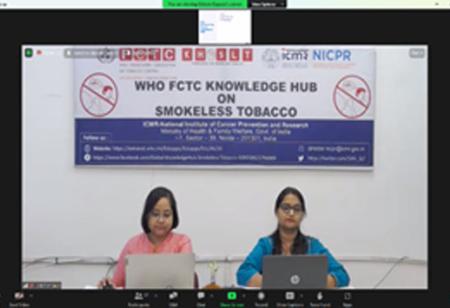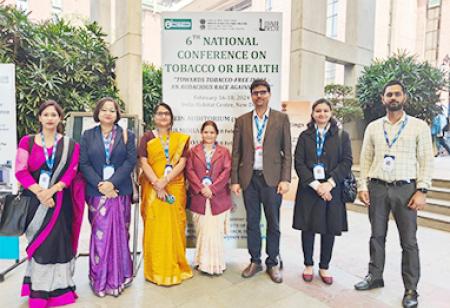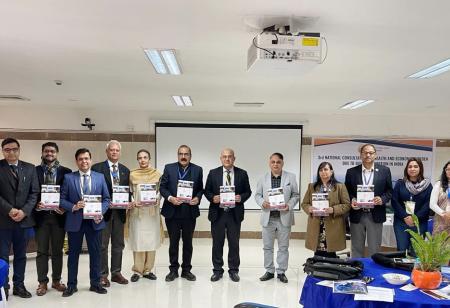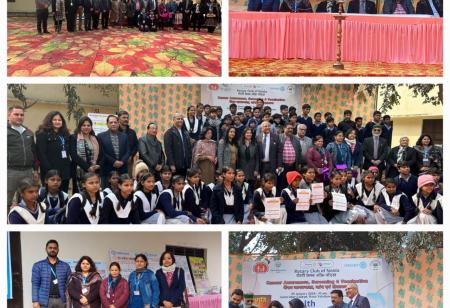

In the ten years between NFHS 3 and NFHS 4, tobacco consumption – smoked and smokeless – decreased from 57 percent to 45 percent among men and from 11 percent to 7 percent among women.
New Delhi: Slowly, but surely, Indians are lowering their consumption of tobacco. The fourth National Family Health Survey (NFHS) reinforced this observation, seen recently in the Global Adult Tobacco Survey (GATS) of 2016-17.
In the ten years between NFHS 3 and NFHS 4, tobacco consumption – smoked and smokeless – decreased from 57 percent to 45 percent among men and from 11 percent to 7 percent among women. The final report of the NFHS 4, published January 12, noted that smokeless tobacco, in the form of gutka and paan masala, is still used more than cigarettes and bidis. At least 15 percent of men chewed gutka or paan masala, as compared to 14 percent who smoked cigarettes and 13 percent who smoked bidis.
Among those who did smoke, at least 37 percent men admitted to having smoked 10 or more cigarettes, bidis in the past 24 hours.
The popularity of chewing tobacco also meant that tobacco is still used more in rural areas than in urban. The number of people using smokeless tobacco – gutka, paan masala, khaini – still worries Dr Ravi Mehrotra, director of the National Institute of Cancer Prevention and Research, where the WHO has set up its global knowledge hub on smokeless tobacco.
Quoting from state-wise data, Mehrotra told News18 that behind an overall decrease, some states were not doing as well as others. While southern states saw a decline in smokeless tobacco, it is still prevalent in Uttar Pradesh and going up in Assam.
“This is a problem,” he said, “people may be quitting smoking because of bans in public places and other restrictions. But no one objects similarly to smokeless tobacco.” He pointed out the role of surrogate advertisements, where tobacco less supari and paan masala were shown in the same packaging as the products with tobacco.
“Most people, including doctors, don’t even know the dangers of supari,” added Mehrotra, “it has 700 chemicals of which 70 are carcinogenic.”
What’s worked are the 85 percent pictorial warnings on every tobacco product, said Dr Monica Arora, a researcher with the Public Health Foundation of India (PHFI). “There was a 17 percent relative reduction from GATS1 (2009-2010) to GATS2 (16-17) in the prevalence of tobacco use, partly due to the warnings,” she told News18.
Though NFHS doesn’t ask people why they don’t smoke or think of quitting, GATS goes into these reasons. The percentage of people who thought of quitting cigarettes after seeing the warnings jumped from 38 percent to 62 percent in GATS 2, as compared to GATS 1, when warnings were only 54 percent of the size of the packaging and only on one side. “The percentage of people who thought of quitting bidis went up from 29 percent to 54 percent and those who thought of quitting smokeless tobacco, went up from 24 to 46 percent,” said Arora.
Even here, smokeless tobacco showed the least decline in consumption.
Wealth and education also played a role in tobacco consumption, noted the NFHS 4 report. More than two-thirds of men and one-eighth of women with no schooling or less than 5 years of schooling consumed tobacco in some form. There is a “steady and substantial” decrease in the use of tobacco as the years of education go up. There is a similar pattern with wealth quintiles, as those in the lowest smoked or chewed tobacco the most. Among those in the lowest wealth quintile, 63 percent of the men and 14 of the women used tobacco.
Scheduled caste and scheduled tribe communities emerged most vulnerable to tobacco use, as women are 17 percent and men 57 percent more likely to use tobacco than those from other caste or tribe groups.
Source: News18





